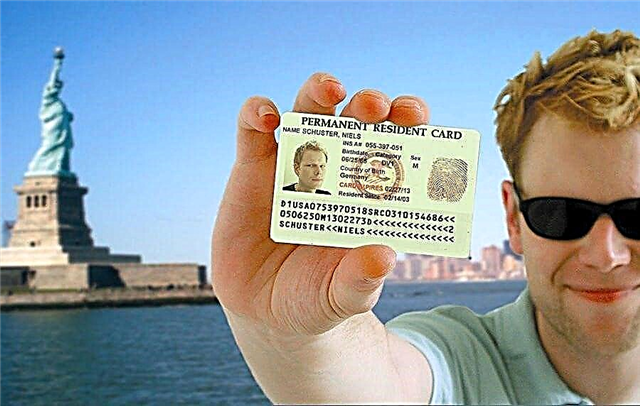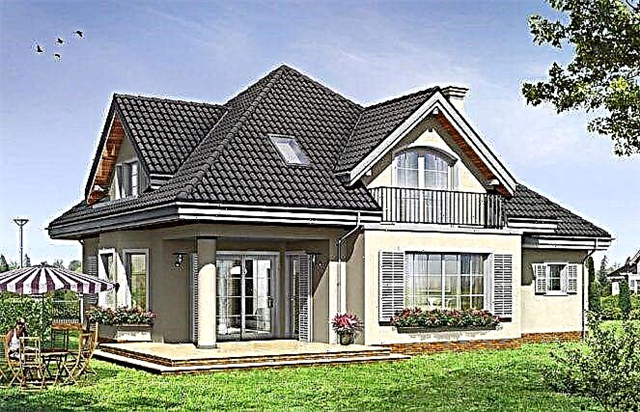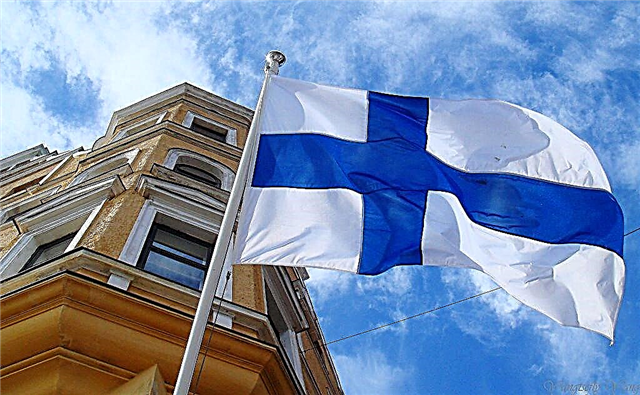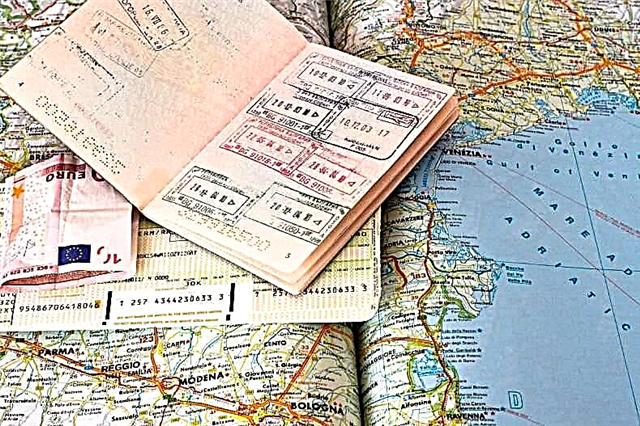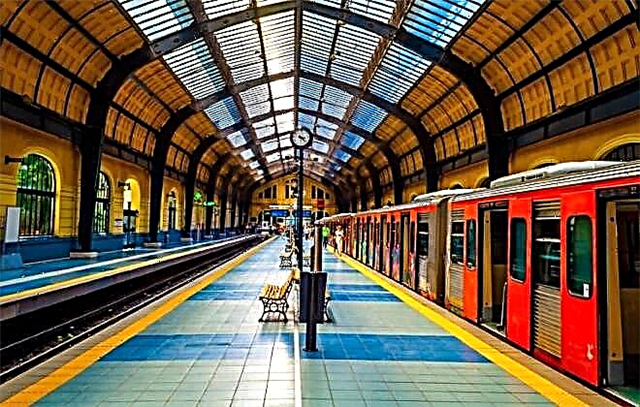Spain is one of the largest and most economically developed European countries. The distance between its northern and southern parts is 900 km, between the eastern and western parts - about 1000 km. The country has a well-developed transport infrastructure that allows local residents to travel long distances in a short time. All major modes of transport are represented in Spain: rail, air, sea and road. Public transport is also well developed, one of the most popular types of which is the metro in Spain.

Features of the subway in Spain
The public transport system in Spain, ranging from a modernized metro to high-speed trains running throughout the country, is recognized as one of the best in Europe.
It is public transport that helps tourists to save a significant part of their money when moving around the kingdom. It should be noted that the combined pass allows you to use various types of public transport not only within the city, but also in the suburbs.
The fastest and most convenient way of transportation for both city dwellers and visitors is the metro. For example, the metropolitan subway, which will celebrate the centenary of its foundation in 2021, carries up to 3 million passengers daily.
The Madrid metro, as a rule, can take tourists anywhere in the city, to any point of interest. It starts its work at 6.00 and ends at 01.30. There are no days off and siesta breaks in the metro. The busiest times are from 7.30 am to 9.30 am and from 2.30 pm to 7.30 pm.
Traffic in the metro is left-sided, the doors in the cars open both automatically and after pressing a button.
Escalators are available only at some of the new stations, and they only work at the exit.
The metro is divided into many zones, the largest of which is zone A - it occupies 70% of the total metro area (within the city). More information about the Madrid Metro can be found in the article “Metro in Madrid”.

In the capital of Catalonia, the metro is very easy to operate thanks to a well-thought-out system of picking up and dropping off passengers, which is called the “Barcelona solution”. Its essence lies in the fact that the exit from the train and the entrance to it is carried out from both sides of the cars. The metro scheme has 2 designations: L1-L11 - electric train lines and T1 – T4 - tram lines.
The metro in Barcelona is open from Monday to Thursday from 5.00 to 24.00, on Fridays - until 02.00. On holidays and weekends, the opening hours are somewhat different - from 5.00 to 23.00 or 24.00. The metro operates around the clock on June 23, August 15, September 19 and 23, December 31. Details can be found on the official website.
Many metro stations in Barcelona are equipped with escalators and lifts. Moreover, the elevators are designed not only for people with disabilities, but also for ordinary passengers.
At the same time, the trains may include old cars, where the doors are opened exclusively by turning the handle. Read more about the metro in the capital of Catalonia in the article “Metro in Barcelona”.

The metro in Alicante connects the city center with the suburban areas of Denia and Benidorm and is a light rail option. It is a cross between a light rail and a metro. The light metro consists of 5 lines with a total length of 110 kilometers. There are about 70 stations in Alicante, some of which are underground.
Every day, the Alicante metro carries at least 20,000 passengers, and this figure reaches 7.5 million people a year. The light metro operates daily, but trains arrive at the station at different times, so to find out the timetable for the desired station, use this link.

The metro in Seville consists of just one line, which runs from southeast to southwest and runs close to the old town. Trains run every day: from Monday to Thursday from 6.30 to 23.00, on Friday and holidays - from 6.30 to 02.00, on Saturday - from 7.30 to 02.00, on holidays - from 7.30 to 23.00. The interval of train traffic is usually 4-7 minutes, but in the early morning and late evening, the waiting time can reach 12-16 minutes.
About 60,000 passengers and about 20 million people a year use the metro in Seville every day, so one line is no longer enough today. In this regard, it is planned to build at least 3 more metro lines. All trains are equipped with air conditioning, carriages can accommodate 190 passengers, for whom 60 seats are provided.
It should be borne in mind that taking pictures in the Seville metro is strictly prohibited.

The main modes of public transport in the Basque Country are buses and metro. In terms of congestion, the metro in Bilbao ranks third in the country, passing ahead only Madrid and the capital of Catalonia, carrying about 87 million passengers annually.
The metro is located on both sides of the Nervion River, and its layout resembles the letter “U”.
Bilbao's Metro is ranked among the world's most extraordinary subways thanks to the modernist design of steel, glass and concrete by British architect Norman Foster.

Valencia is a small city located on the southeast coast of Spain. But there is also a subway here. The system, called Metrovalencia, is not only electric trains that run underground, but also trams that run both in the city and in the suburbs.
The metro operates daily from 05.00 to 24.00. However, the train schedule may vary depending on the day of the week and the line chosen. You can find out more on the official metro page.

Which cities in Spain have a metro and how is it arranged
The length of the metro in Madrid is 293 km, which allows it to enter the 10 longest metro systems in the world and to be in the top three in Europe (in the first place - the metro in London, in the second - the metro in Moscow). 13 lines have been laid underground, the surface part (light metro) has 3 lines.

During a trip to Barcelona, many tourists choose the metro for more convenient movement. As you know, this city has many attractions: the Sagrada Familia Cathedral, Casa Batlló, Gaudí's House Museum, Park Guell, the Gothic Quarter, Montjuïc Hill and others, which are quite easy to reach by metro.
In Barcelona metro lines are served by 2 companies: eight lines - TMB and three - FGC. Station entrance can be indicated by a red letter M in a white rhombus with the TMB logo or a white sign on a yellow background with the FGC logo.
Regardless of the service company, a Barcelona map must be placed next to the metro entrance, which indicates the line on which the station is located.

The construction of the metro in Alicante began only in 2000. At the moment, transportation is carried out on 5 lines:
| Branches | Description of the subway scheme |
|---|---|
| Red Line - L1 | It is a link between the cities of Alicante and Benidorm. There are intermediate stops, but there are not many of them. The line is 40 km long and the trip takes one hour. The train runs on the route 2 times per hour. |
| Green Line - L2 | Connects Alicante and the suburb of San Vicente del Raspeig, where the university and outlet center are located. |
| Yellow Line - L3 | Connects Alicante and the suburb of El Campello. The length of the route is 15 km. The train runs 2 times an hour. |
| Purple Line - L4 | Connects Alicante and the suburb of San Juan. The route runs along the entire Cabo De Huertas promontory. The train runs 2 times per hour and makes many intermediate stops. |
| Gray Line - L9 | It is a link between the cities of Benidorm and Denia. An ordinary electric train runs along the route 40-50 km long every 60 minutes. The entire route can be covered in 1.5 hours. |
Line 4L previously connected Alicante beach with other lines where you could change trains (Sangueta station). The length of the line was 2-3 km. However, this line has been closed since July 2021.

The Valencia metro was opened in 1988. It consists of 6 lines and ranks 4th in Spain in terms of the number of stations. Moreover, four stops are located along the coast, so getting to the beach is not difficult. The longest line consists of 58 stations, and lines 4 and 6 are tramways.

The whole of Valencia is included in zone A, and zones C and D are located in the suburbs (trains stop there at the request of the passenger).

The question of building a metro in Seville, the center of the province of Andalusia, arose back in the 70s of the last century, but due to fears of damaging the foundations of buildings in the historical part of the city, the project was suspended and frozen.
They returned to this issue 33 years later, and in 2003 the Seville Metro Corporation decided to resume the project, which was caused by the need to get rid of numerous traffic jams as much as possible.
Today in the city there is only one metro tram line - railway transport of the underground-overground type, the length of which is 18 km. 22 stations are open. The train covers the distance from the starting station to the ending station in 36 minutes.

In 1995, a metro appeared in the Basque Country. The length of the metro in Bilbao is 38.2 km. Today there are 36 stations in operation, each of which has a unique design.
Two metro lines in Bilbao have no names and are indicated with numbers and colors: for example, line 1 is assigned red, and line 2 is black.
- The first line, which is 29.4 km long, runs through the entire territory of Bilbao from east to west and includes 29 stations.
- The length of the second line, leading from the eastern part to the city center, is only 8.8 km.

The construction of the subway in Malaga began 13 years ago. Its opening was planned for 2021, but the subway began to operate only on July 30, 2021. The southern city in the Costa del Sol region has become the 6th metro owner after Barcelona, Madrid, Seville, Valencia and Bilbao.
The Malaga metro is a light rail transport system, partly underground and partly above the surface. Compared to the metro in large cities, it is quite spacious here at stations, and in crossings, and in lobbies. To date, 17 stations have been opened on two lines. The first line is 11 km long, the second - 7 km.

The Granada Metro passes through municipalities such as Granada, Albolote, Maraquena and Armilla. A total of 26 stations have been opened along the route with a total length of 26 km. Most of them (23) are ground based, and only 3 stations are located underground.

Murcia is a university city in the southeast of Spain. The city's metro line, connecting the center of Murcia with new districts, commercial centers and the university campus, grows every year.

In 2004, a decision was made to build a metro in the capital of the Balearic Islands to link the city center with the University of Palma de Mallorca. The only station that is on the surface is Son Sardina. The rest are underground at a depth of 8 meters.
An underground subway line is a narrow gauge, where current is supplied through an overhead wire. The train consists of 6 carriages. The entire route can be covered in 13 minutes.

The resort town of San Sebastian is one of the most beautiful resort towns in Spain. The city, located on the shores of the Bay of Biscay, is famous for the beaches of La Concha and Ondaretta. For more convenient movement around the city, there is a subway, a diagram of which can be found below.

The Metro on Tenerife is a light rail service operated by Metrotenerife. There is a metro only in the largest city on the island - Santa Cruz.
| Lines | Description |
|---|---|
| Line No. 1 | This is the main line that connects the city of Santa Cruz and the municipality of La Laguna. The length of the line is 12.5 km. There are 12 stops along the route. Main stops: Hospital Universitario, Candelaria Hospital, Plaza Weyler. |
| Line No. 2 | A short line with a length of only 3.6 km. Line 2 runs through densely populated areas such as La Cuesta and Taco y Tincer. |

Metro fares in different cities of Spain
Most travelers, of course, are interested in the question of how much the metro fares. It should be noted that the cost of travel in Spain depends on the city, travel zone and number of trips:
| Town | Fare |
|---|---|
| Madrid | The fare for almost all lines is 2 euros, but there are lines where the fare is slightly cheaper - 1.5 euros. For 10 trips in any zone, you need to pay 18.3 euros. There are public transport tickets for travelers on sale - the Tourist Travel Pass. |
| The ticket can be bought for 1, 2, 3, 5 and 7 days. The ticket price (for all zones) is 17, 26.4, 35.4, 50.8 and 70.8 euros, respectively. Pensioners pay € 10.9 and get unlimited travel. | |
| Barcelona | A regular ticket (for 1 trip) will cost 2.15 euros. The T-10 ticket (tarjeta multiv iaje) costs € 9.95 - it is for one zone and is valid for 10 trips on the metro and other modes of transport. There are cards that are valid for 2, 3, 4 or 5 days. They allow you to make an unlimited number of trips and cost 14, 20, 20.5 and 30.5 euros, respectively. |
| Alicante | A one-way ticket will cost about € 1.15. |
| Valencia | A single ticket for travel in one zone will cost 1.5 euros, in the case of travel and in the opposite direction - 2.90 euros. The cost of a single ticket for multiple zones ranges from € 2.10 to € 3.90. A ticket for 10 trips will cost € 7.20. |
| Seville | One trip in one zone costs 1.35 euros, in 2 zones - 1.60 euros, in 3 zones - 1.80 euros. A daily ticket for one person costs 4.50 euros. There is a reusable metro card, if purchased, the fare will be cheaper (in the 1st zone - 0.82 euros, in 2 zones - 1.17 euros, in 3 zones - 1.37 euros). The cost of the card is 1 euro. |
| Bilbao | Depending on the travel zone, you will have to pay from 1.50 euros to 1.75 euros. A daily ticket for all zones costs 4.60 euros. |
| Malaga | A single-trip ticket will cost 1.35 euros. A ticket for 6 trips costs 5 euros, and for 12 - 10 euros. By purchasing a multi-trip ticket, you can save 0.82 euros on each trip. |
| Granada | A one-way metro ticket costs € 1.35, and a round trip ticket costs € 2.70. A tourist ticket costs 4.50 euros and allows unlimited travel throughout the day. |
How to pay for a metro ride
Tickets can be purchased at ticket offices, ticket booths and automatically through terminals. Almost everywhere there is an opportunity to pay for the purchase of a ticket through the terminal both in cash and with bank plastic. However, if a tourist is in the city for the first time and does not understand the metro zones and the principles of operation of terminals, it is worth contacting the cashier or the cashier at the ticket booth.
Finally
The metro is the fastest way to travel not only in the major cities of Spain, but also in the resort regions. The fare depends on the city, the area of travel and the number of trips. Most expensive travel will cost in the capital of Spain and Barcelona. The lowest fares are found in Seville, Malaga and Granada.

